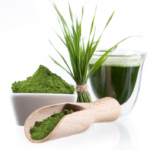
Synthetic Food Dyes
Monthly Newsletter – August ’23 Synthetic Food Dyes (And Their Risks To…
This Month’s Topic – Mercury In Fish

As we step into the heart of spring, Fountain Hills Healthy Heartbeats is thrilled to bring you insights, tips, and recipes to foster heart health and overall well-being. This March, we’re diving deep into a concern many of us share—Mercury in Fish. Alongside, we’ll share our Healthy Tip and Recipe of the Month (Also Related to Healthy Fish Consumption), perfectly themed for a heart-healthy spring!
Introduction:
Fish has long been celebrated as a cornerstone of a healthy diet, lauded for its high-quality protein, omega-3 fatty acids, and various essential nutrients. These components are pivotal in supporting heart health, brain development, and overall well-being. However, the shadow of mercury contamination has cast a long-standing concern over fish consumption.

Mercury, a potent neurotoxin, finds its way into our oceans and fish stocks, posing significant health risks, particularly to pregnant women, young children, and those with heavy consumption patterns.
This blog post aims to demystify the concerns surrounding mercury in fish, offering guidance on safe consumption practices, shedding light on the contents of fish oil supplements, and discussing the broader environmental and health implications of mercury exposure.
By navigating through the complexities of mercury in fish, I strive to empower my readers with the knowledge to make informed dietary choices that balance the nutritional benefits of fish with the potential risks associated with mercury exposure.
The Concerns About Mercury in Fish:
Mercury is a heavy metal found naturally in the environment and released through industrial processes, such as coal burning and mining. It exists in several forms, but the most concerning for human health is methylmercury.

Methylmercury is created when mercury deposits in water bodies are transformed by microbial activity into this toxic compound, which is readily absorbed by aquatic organisms. This form of mercury is particularly dangerous because it can cross the blood-brain barrier and the placental barrier, directly affecting the nervous system and developing fetuses.
Fish absorb methylmercury from their environment and their diet, leading to bioaccumulation and biomagnification. Larger, longer-lived predatory fish tend to have higher concentrations of methylmercury due to their position at the top of the food chain.

This accumulation poses a significant health risk to humans who consume these fish, with potential outcomes including neurological impairment, developmental delays in children, and cardiovascular problems in adults.
The primary concern with mercury in fish is its potential to damage brain function and development. In adults, high mercury exposure can lead to symptoms such as numbness in the hands and feet, muscle weakness, and impaired vision and hearing.
For pregnant women, the stakes are even higher, as methylmercury exposure can result in birth defects, including cognitive impairment and developmental delays in their offspring.

Fish Consumption Recommendations:
In light of these concerns, public health agencies have issued guidelines to help consumers navigate fish consumption safely. The Food and Drug Administration (FDA) and the Environmental Protection Agency (EPA) have jointly recommended that adults eat 2-3 servings of low-mercury fish per week, equivalent to 8-12 ounces.
 For pregnant women, the recommendation is the same, emphasizing the choice of fish low in mercury to protect fetal development. Children should also consume fish, but in smaller portions, tailored to their age and weight, to ensure they gain the nutritional benefits without the risks.
For pregnant women, the recommendation is the same, emphasizing the choice of fish low in mercury to protect fetal development. Children should also consume fish, but in smaller portions, tailored to their age and weight, to ensure they gain the nutritional benefits without the risks.
Fish Most Affected:

Predatory fish like swordfish, shark, king mackerel, and tuna are known to contain higher mercury levels due to their diet and longer lifespan. Conversely, smaller fish such as sardines, anchovies, and salmon carry lower risks.
Safe Consumption Tips:
Variety is Key: Incorporate a mix of seafood in your diet to avoid high mercury exposure from a single source.
Opt for Smaller Fish: Smaller species generally accumulate less mercury.
Check Advisories: Pay attention to local and national advisories regarding fish consumption, especially if you catch your own.
The rationale behind these guidelines is to maximize the health benefits of fish consumption—such as the intake of omega-3 fatty acids, which support cardiovascular health and cognitive development—while minimizing the risk of mercury exposure.
Omega-3 fatty acids, particularly EPA and DHA, are crucial for heart health, reducing inflammation, and supporting neurological development. By choosing fish species that are lower in mercury, you can enjoy these health benefits without undue exposure to mercury.

Exposure to toxic heavy metals is a pervasive issue, arising from everyday sources including aluminum foil, batteries, metal cookware, aged paint, and even through contaminants in food such as pesticides and herbicides. Such metals, notably mercury and lead, can exert significant stress on the human immune system (Tchounwou et al., 2012).
Studies suggest that incorporating certain foods into one’s diet can aid in the chelation and subsequent removal of these heavy metals through the digestive process. I have chosen to stress the word can because heavy metals are TOXIC…period. None of the studies I’ve quoted should be considered a remedy to, or an alternative to simple avoidance of the toxins in the first place.
That being said, notable among the foods that have shown some promise in removal of toxic metals are:
 Spirulina: A blue-green algae that serves as an excellent protein source, rich in essential amino acids. Studies have highlighted spirulina’s potential in binding with heavy metals, facilitating their removal from the body (Ponce-Canchihuamán et al., 2010).
Spirulina: A blue-green algae that serves as an excellent protein source, rich in essential amino acids. Studies have highlighted spirulina’s potential in binding with heavy metals, facilitating their removal from the body (Ponce-Canchihuamán et al., 2010).
 Barley Grass Juice Extract: Known for its high levels of vitamins, minerals, and antioxidants, barley grass juice extract is suggested to support the body’s detoxification processes (Yu et al., 2015).
Barley Grass Juice Extract: Known for its high levels of vitamins, minerals, and antioxidants, barley grass juice extract is suggested to support the body’s detoxification processes (Yu et al., 2015).
 Cilantro: Often referred to as a super herb, cilantro is recognized for its detoxifying, antiseptic, antifungal, and antioxidant properties. Research has indicated cilantro’s efficacy in facilitating the excretion of certain heavy metals (Aga et al., 2001).
Cilantro: Often referred to as a super herb, cilantro is recognized for its detoxifying, antiseptic, antifungal, and antioxidant properties. Research has indicated cilantro’s efficacy in facilitating the excretion of certain heavy metals (Aga et al., 2001).
 Wild Blueberries: Compared to their common counterparts, wild blueberries possess a higher concentration of antioxidants, which are vital in combating oxidative stress induced by heavy metals (Vendrame & Klimis-Zacas, 2015).
Wild Blueberries: Compared to their common counterparts, wild blueberries possess a higher concentration of antioxidants, which are vital in combating oxidative stress induced by heavy metals (Vendrame & Klimis-Zacas, 2015).
 Atlantic Dulse: This edible seaweed is a source of iodine, essential for the production of thyroid hormones. Iodine plays a crucial role in maintaining thyroid health, potentially mitigating the impact of heavy metals on this gland (Skibola & Smith, 2000).
Atlantic Dulse: This edible seaweed is a source of iodine, essential for the production of thyroid hormones. Iodine plays a crucial role in maintaining thyroid health, potentially mitigating the impact of heavy metals on this gland (Skibola & Smith, 2000).
By incorporating these foods into a detox smoothie, individuals may potentially alleviate the burden of heavy metals on their bodies, though it’s important to note that detoxification strategies should complement, not replace, conventional medical treatments and interventions.
Making informed choices about the seafood we consume can help us enjoy its health benefits while minimizing the risks associated with mercury. Stay tuned for our Healthy Tip and heart-healthy Recipe of the Month, designed to keep your heart beating strong and your body thriving.